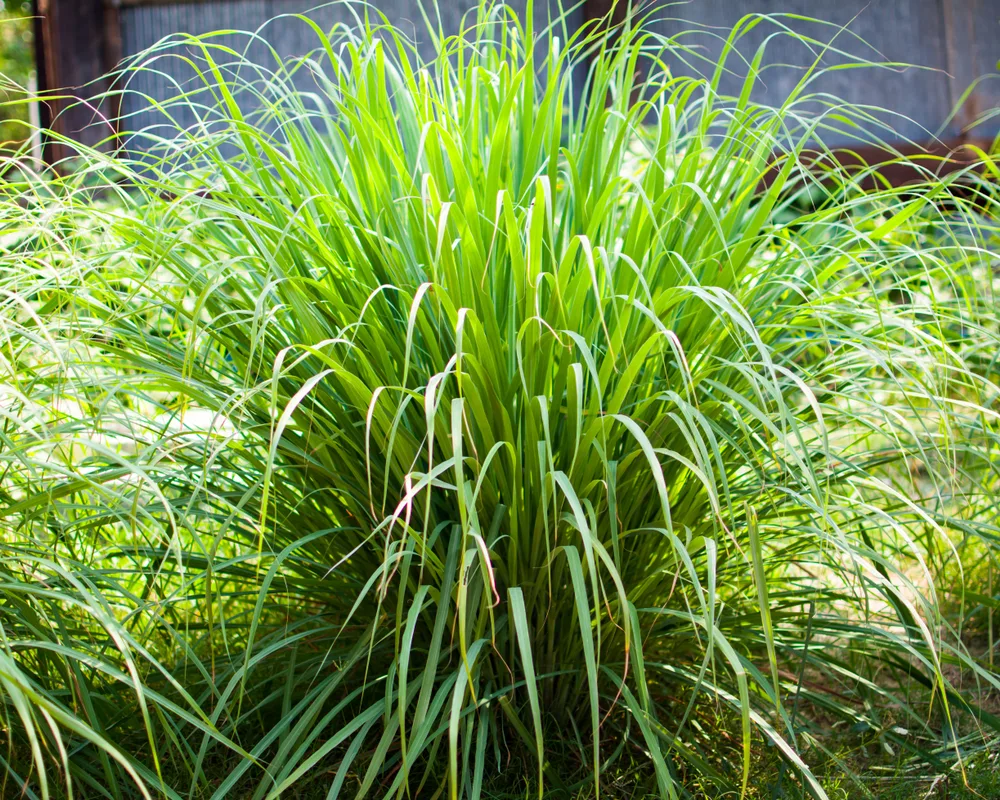
Lemongrass is a key ingredient in plenty of Asian cuisines and as you will discover as you read on, it is also useful in a wide range of other ways.
But if you do not live in a tropical or subtropical climate zone, you might be forgiven for imagining that this is not a plant that you can grow where you live.
You might be surprised to learn that you can grow it in your garden, and can even grow it in a cool temperate climate as long as you bring it indoors or undercover during the winter months.
The key to success, if you live anywhere colder than zone 9a, is to grow it in containers.
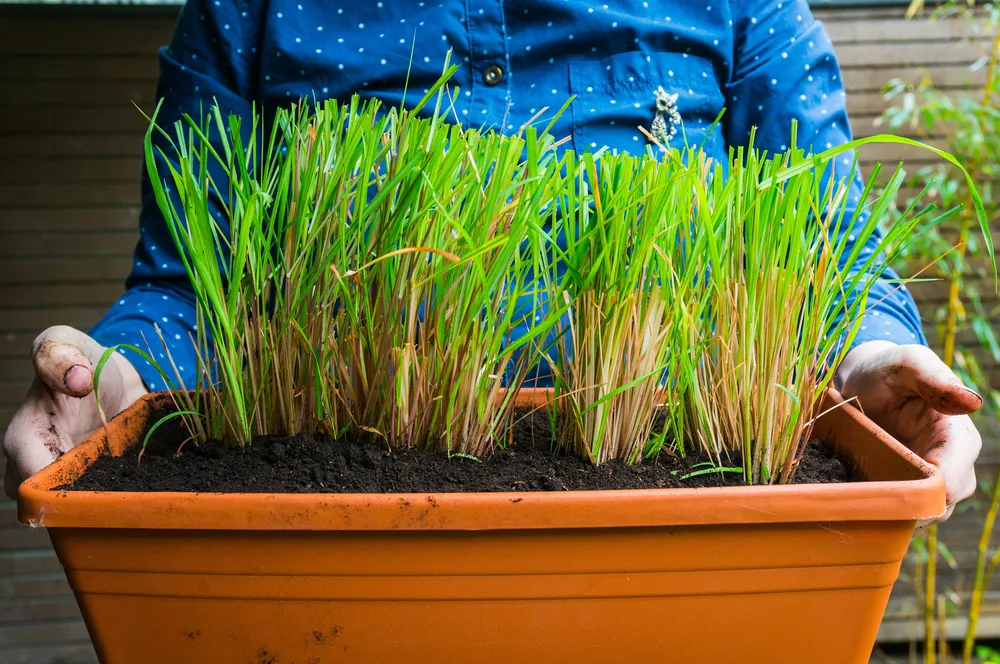
That way, you can easily move it somewhere with more protection during the coldest part of the year. In cooler temperate climate zones, where even summer temperatures are not that high, it would usually be best to grow it indoors, or in a greenhouse.
What is Lemongrass?
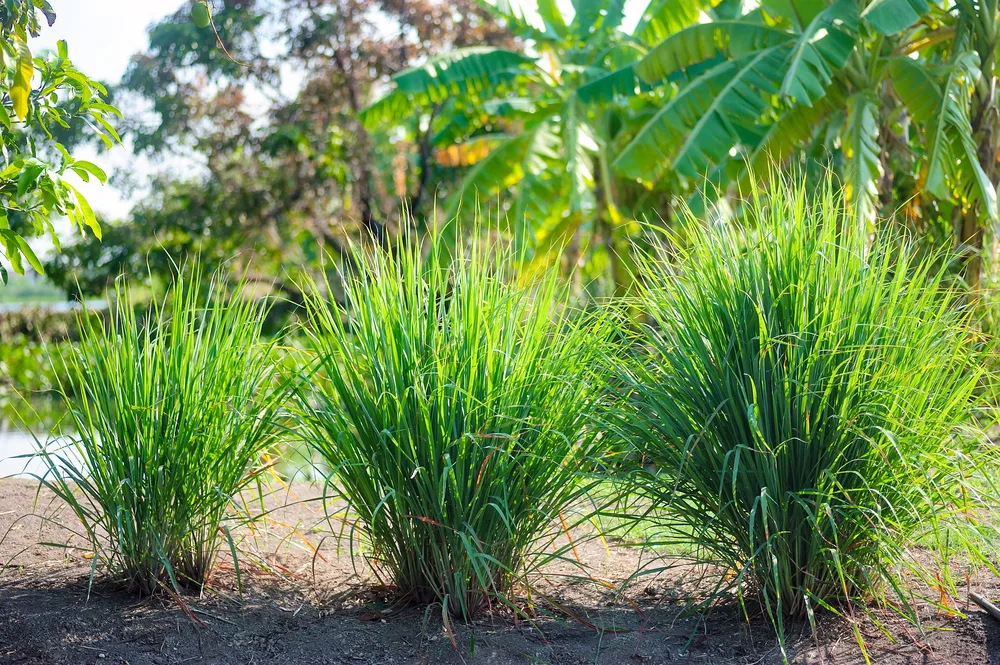
Lemongrass, also known as Citronella grass, goes by the Latin name Cymbopogon citratus.
It probably originated in Sri Lanka or Malaysia, though it is not known in the wild. This is a tropical, evergreen perennial grass that is commonly cultivated outdoors in the tropics, subtropics, and warmer temperate climate zones. It is also increasingly popular for growing in containers in cooler climate zones.
When it is grown in ideal conditions, the plant can reach a size of 1.5m high and 1.5m wide. Though of course when grown in containers it is unlikely to get that large.
Lemongrass is a plant that really does require as much sun and warmth as possible. Lemongrass grows at its best at temperatures between 75F and 86F, though it can tolerate temperatures down to about 64F.
Be warned – it can be killed by temperatures lower than 50F. It cannot tolerate shade.
Whether you grow it in the ground or in containers, it will need a free-draining medium to grow in. It does not like to have ‘wet feet’.
How To Regrow Grocery Store Lemongrass
If you cannot source lemongrass plants easily where you live, you can use stems from the stores to regrow lemongrass.
You can of course also grow lemongrass from seed. Here is one of our favorite sources of seeds.
If growing from grocery store stalks, simply place the stems into some water (root end downwards) and after a week or so, new roots should begin to appear.
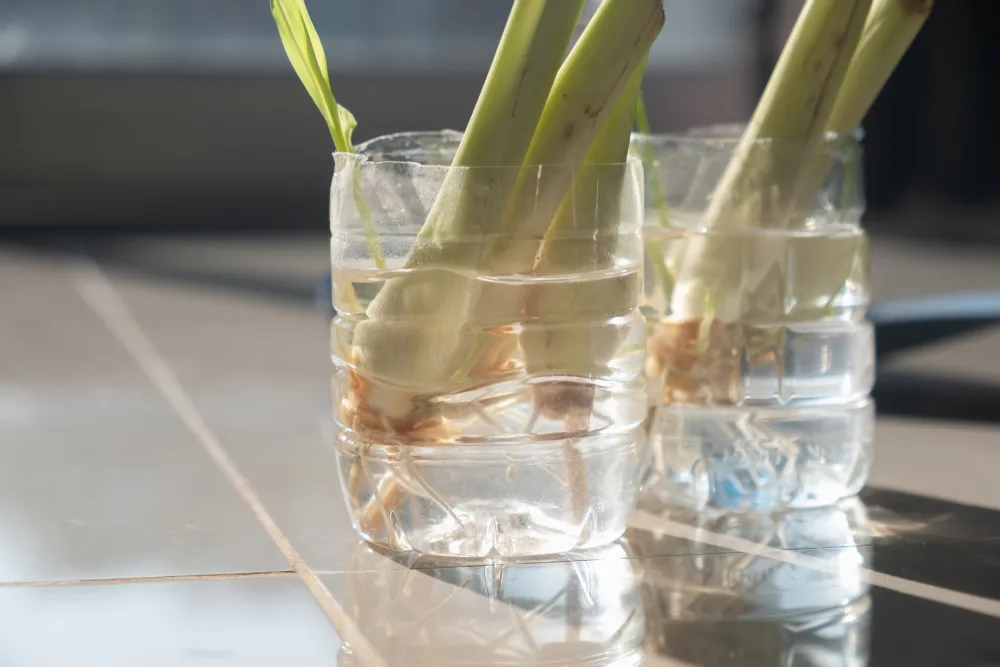
As soon as the roots appear, you can plant these into a suitable free-draining growing medium to grow the plants on.
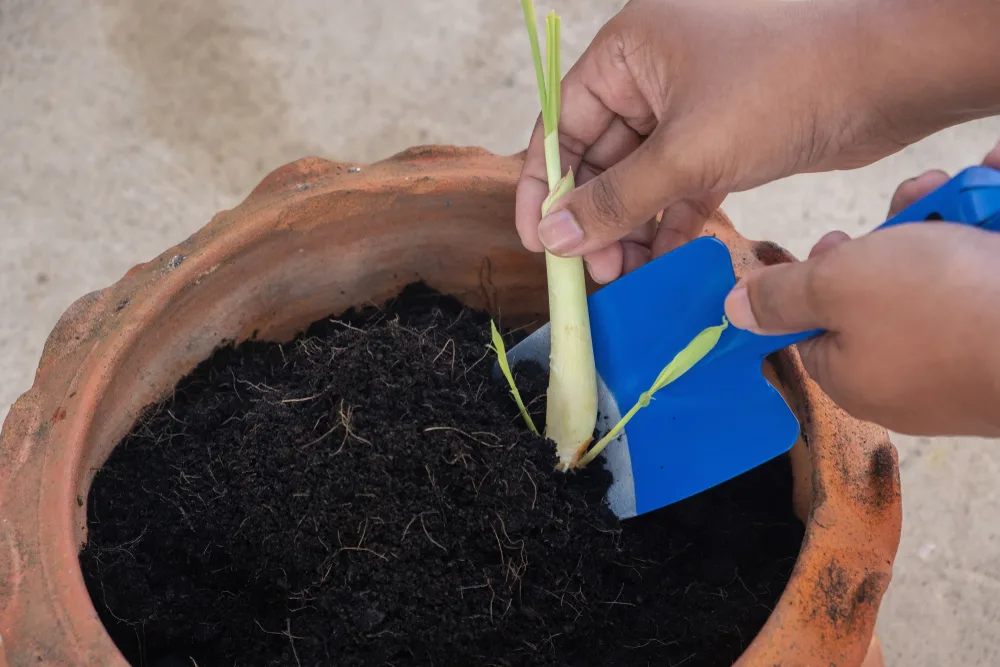
Once you have some lemongrass growing in your garden, it is easy to get more plants. It is usually propagated simply by dividing established clumps.
Why Grow Lemongrass in Your Garden?
Growing tropical plants in a temperate climate garden is not always the easiest choice. But aside from providing lemongrass with the right temperatures, enough sunlight, and plenty of nutrients, you won’t have to do much. It does tend to be a relatively trouble-free plant.
Even with the extra work involved in caring for a plant in a container, and perhaps moving it indoors when cold weather approaches, it is still well worthwhile considering growing it where you live.
Here are some of the reasons to grow lemongrass:
1. As Part of a Container Garden
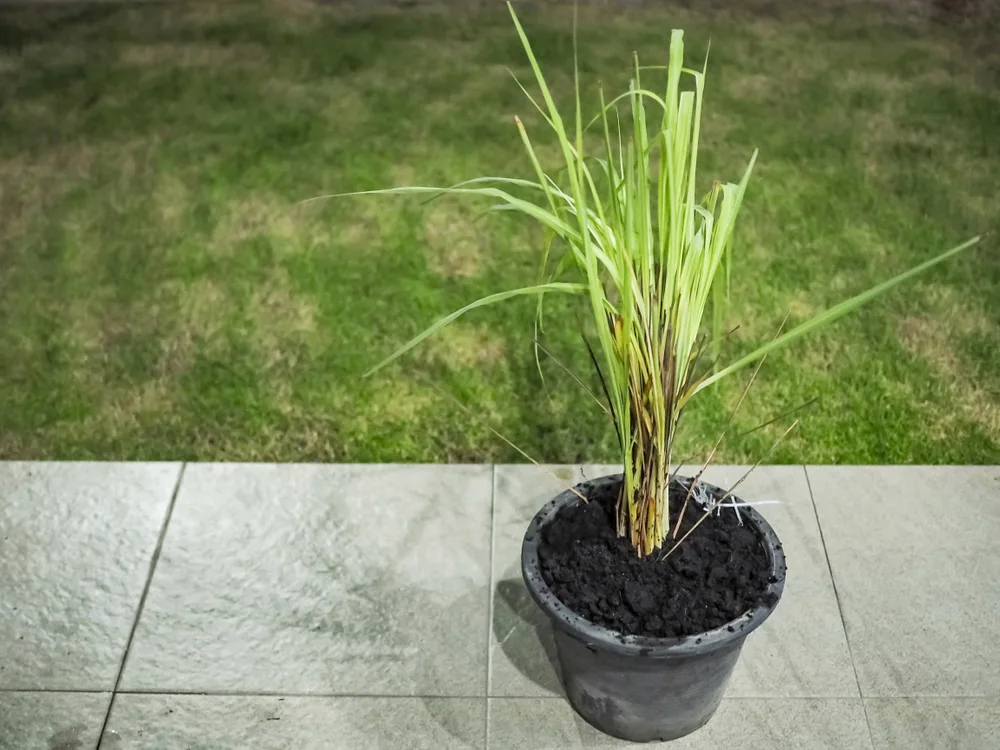
If you are creating a container garden, trying to make the most of whatever growing space you have available, lemongrass can be a great choice.
As a relatively drought tolerant plant, that likes free-draining conditions, it can thrive even where water is scarce. Watering can always be more of a challenge when gardening in containers, so it can often be a good idea to choose plants with lower water requirements.
Lemongrass would usually be grown in its own container. But if you are growing tropical/ warm climate trees or other large plants (such as bananas for example) in large pots or planters, lemongrass could be a great companion plant to place around the edges of those containers.
Lemongrass also works well as a companion plant alongside ginger, turmeric, galangal, pigeon peas or taro, for example. And it can thrive alongside Mediterranean herbs such as thyme, marjoram or oregano in a container herb garden.
2. For Its Delightful Fragrance
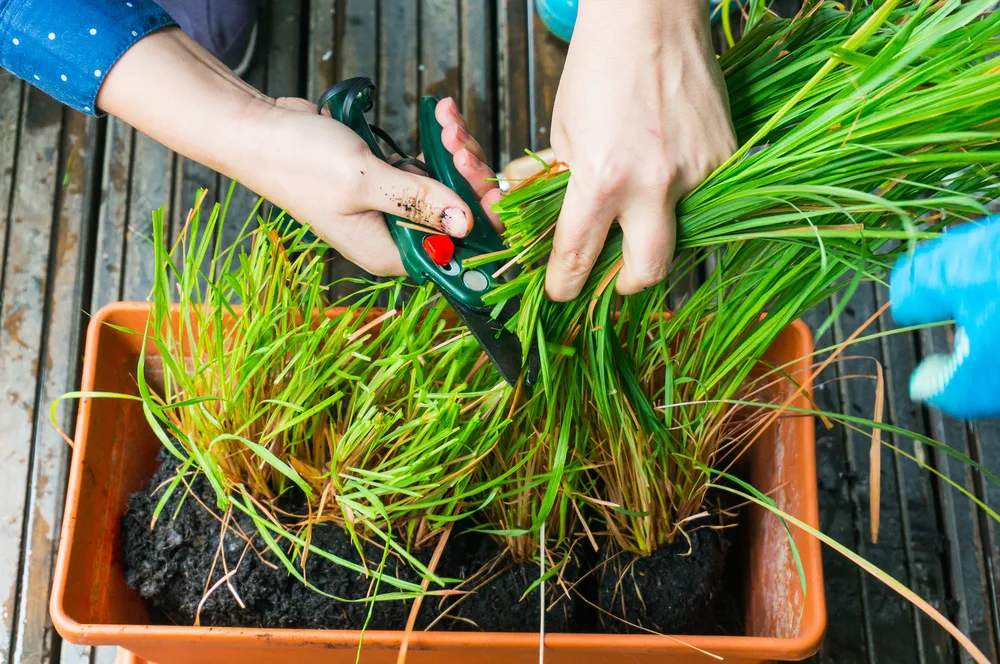
Whether you are able to grow lemongrass in the ground, or must grow it in containers, undercover or indoors, another reason to grow it is for its delightful fragrance. Place lemongrass close to a seating area and you can enjoy its citrus scent. The aroma can be a delightful, relaxing one, which can enhance living areas, whether they are outside or indoors.
3. For Ground Cover and Erosion Control
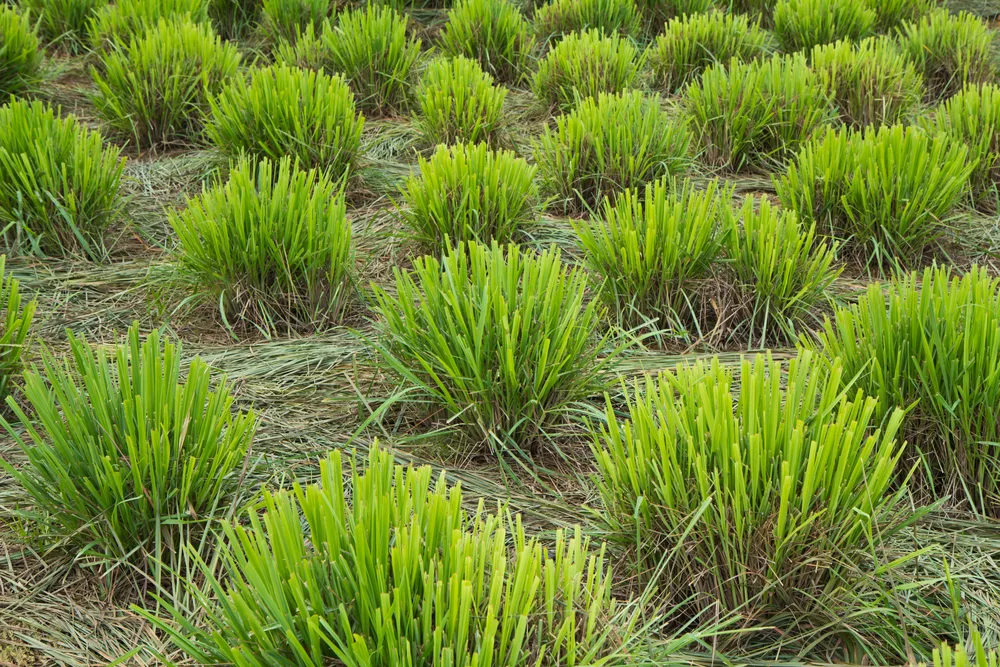
If you are living in a climate zone where it is possible to grow lemongrass outdoors in the ground, lemongrass can be incredibly useful as a landscape plant.
In tropical and sub-tropical climates and hot temperate climate zones, it can be useful for ground cover and erosion control. This plant’s root system and clump forming spreading habit mean it can help keep soil in place. It can also help to retain moisture by keeping the soil surface covered.
4. To Improve Degraded Soil
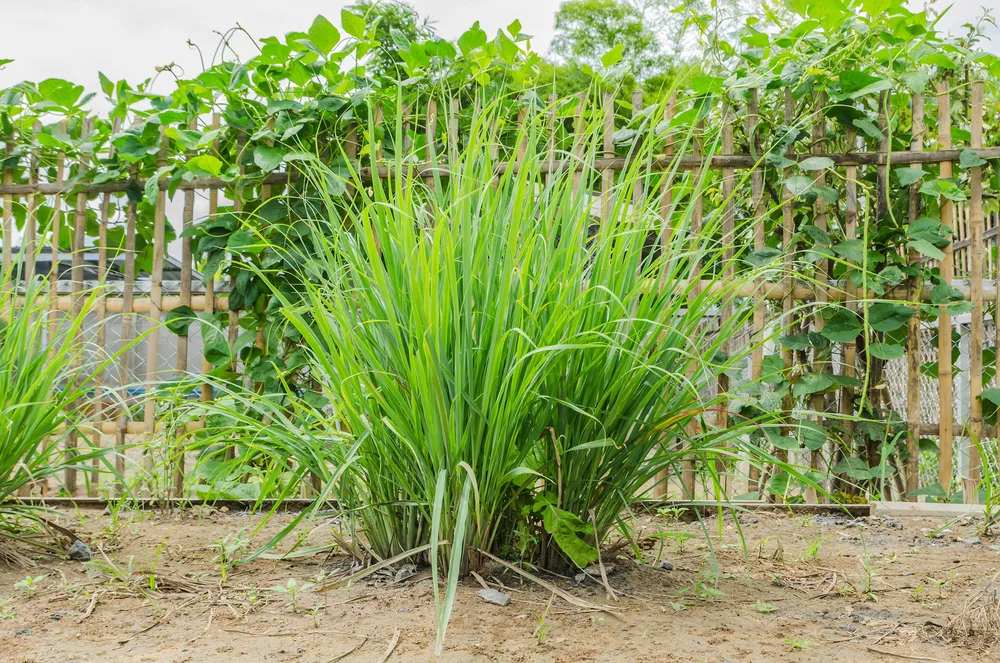
In areas where it can be grown effectively in the ground, lemongrass can also be very useful in improving degraded soil.
The plant grows quickly, creating plenty of vegetative matter that will rot down and build soil structure and fertility. It is a relatively effective dynamic accumulator of potassium.
5. To Edge Beds and Borders
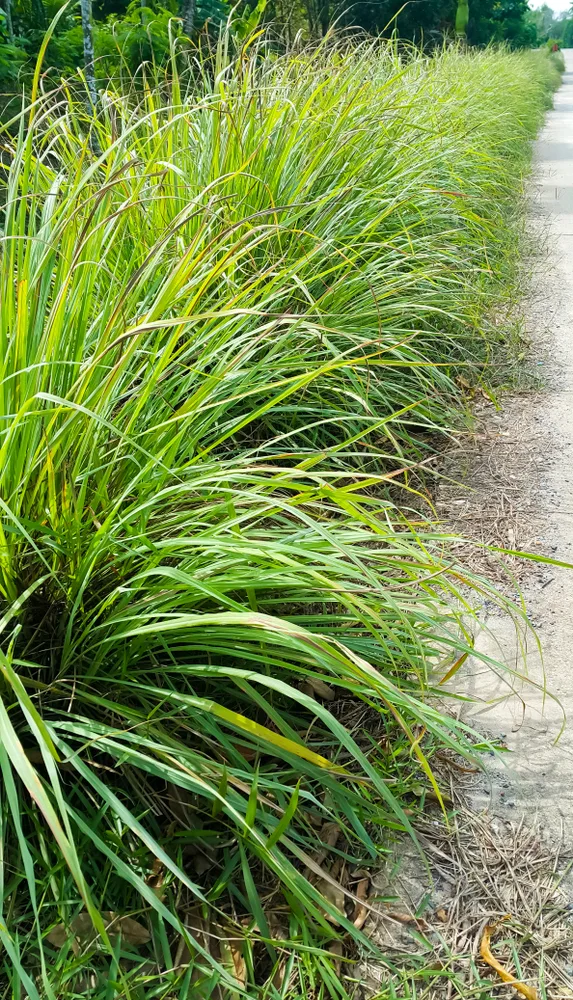
Lemongrass can also be useful as a living bed edging or border for growing areas in warmer climates. It can be used as a divider to prevent more invasive, spreading plants, such as sweet potatoes for example, from running out of bounds.
Its growing habit can prevent such plants from taking over other areas of a garden, or spreading out onto paths. It can also be used as a barrier to stop weeds from growing into a growing area.
6. To Repel Certain Insects
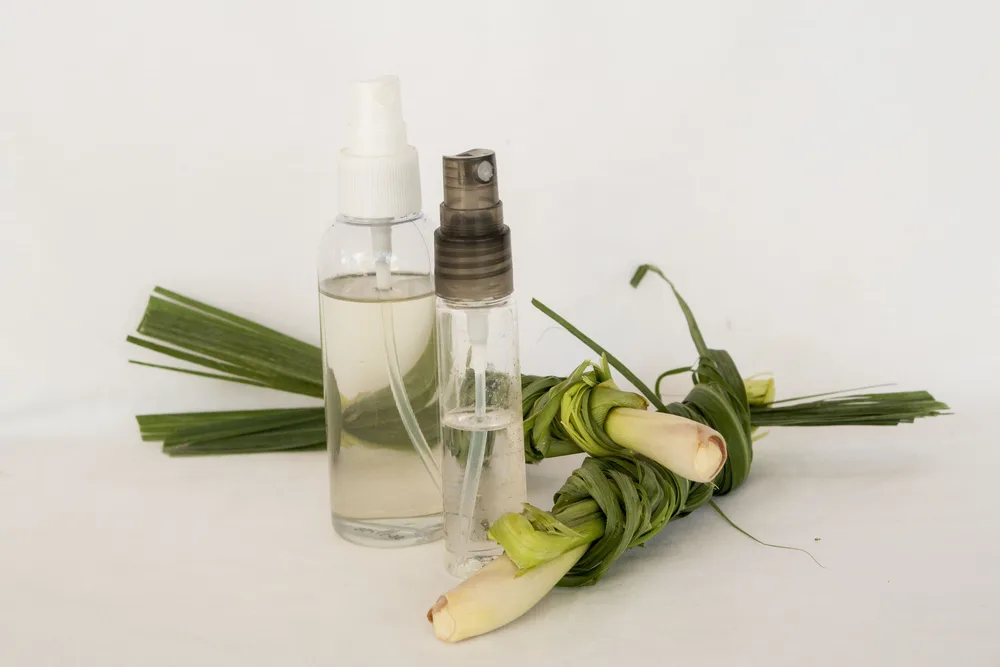
Whether grown in the ground or in containers, lemongrass is also a good companion for other plants due to its insect repellent properties. The citronella in lemongrass repels mosquitoes, stable flies and a range of other insect pests like whiteflies and aphids.
The insect repelling properties apply to an extent to the plants as they are growing, but you can also extract citronella from the plants to create citronella candles, or infusions to keep pests away from certain plants or out of your home.
7. For Culinary Use
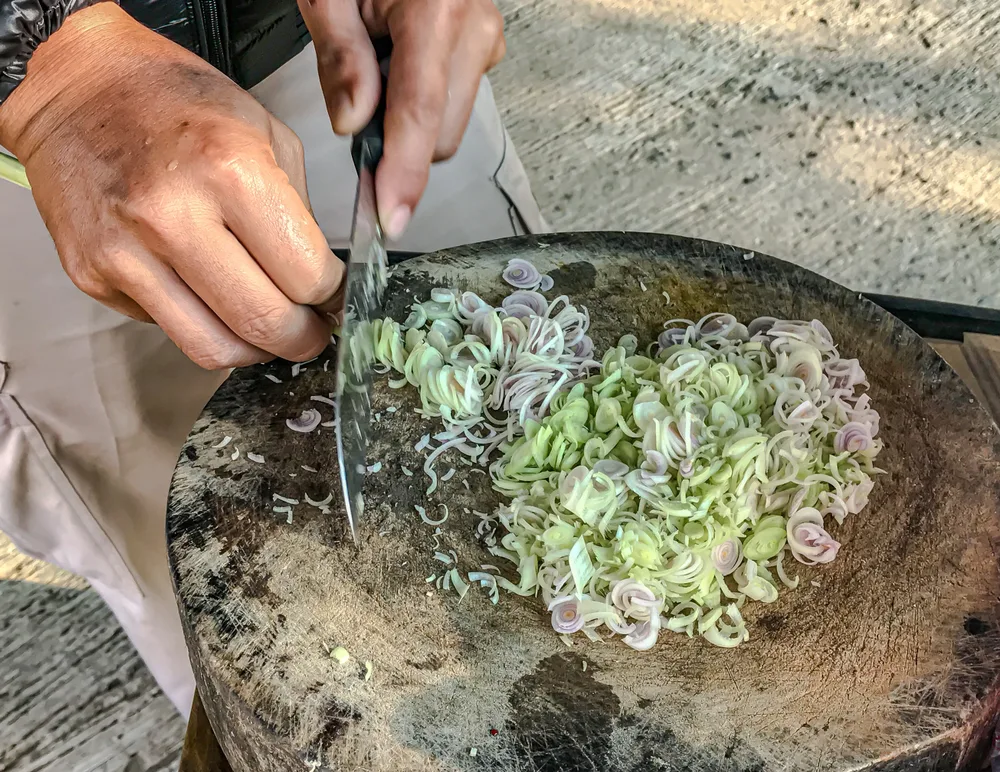
Of course, the best known reason to grow lemongrass is for culinary use.
The heart of the young shoots is cooked and eaten as a vegetable. Leaves are used in cooking, or in brewing a healthy tea. Basal portions of the shoots are used to impart a lemon-like fragrance and flavor, and older leaves are placed in dishes (like bay leaves) and then removed before consumption.
Lemongrass is a key ingredient in many favourites, such as Thai curries, and other South East Asian meals. Here are a few recipes that you might like to try:
Thai Green Curry With Spring Vegetables @ cookieandkate.com.
Vegan Stir Fry With Lemongrass @ thespruceeats.com.
Lemongrass Coconut Noodle Soup @ laurencariscooks.com.
8. For Natural Medicinal Uses
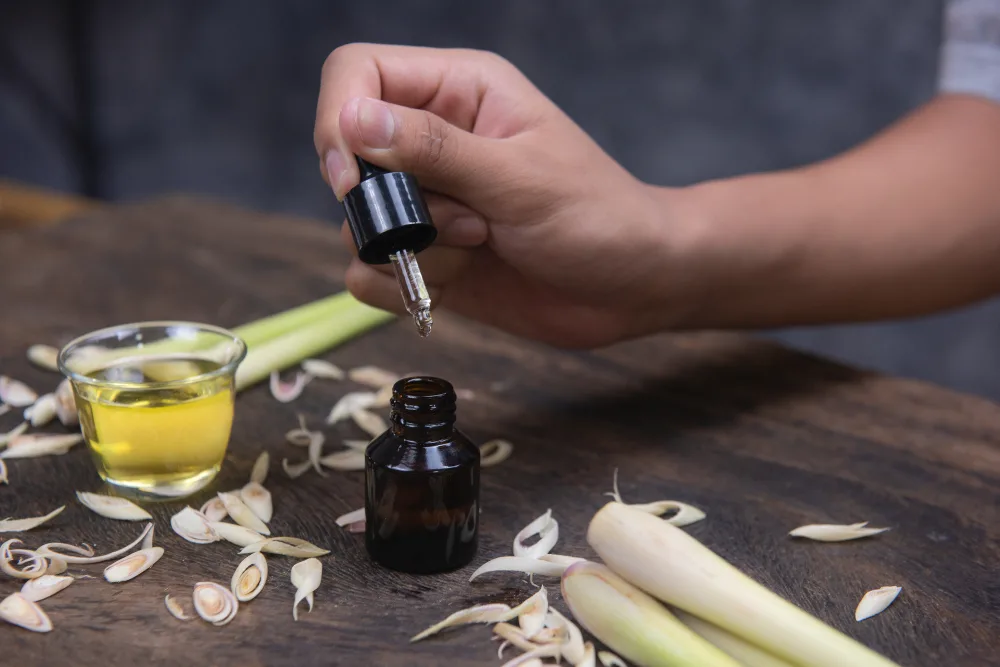
Lemongrass is also a useful herb in natural medicine. The tea brewed from the leaves of the plant is used in the treatment of digestive issues. It is also used to treat mild feverish illnesses, especially in children. The leaves relieve spasms and increase perspiration.
Lemongrass also yields a very useful essential oil. This has both antifungal and antibacterial properties. Externally, this essential oil can be used (diluted appropriately in a carrier oil) to treat a range of conditions such as athlete’s foot, ringworm, scabies and lice. It can also be applied to ease pain in arthritic joints.
9. To Make Organic Household Cleaners
Due to its anti-bacterial and anti-fungal properties, lemongrass can also be used as an ingredient in homemade natural household cleaning products.
The essential oil can be used in a vinegar and water solution as a multi-purpose surface cleaner, for example. Mix 30 drops of lemongrass essential oil with 4 litres of water and 1 litre of vinegar.
10. To Make Eco-Friendly Cleaning and Beauty Products
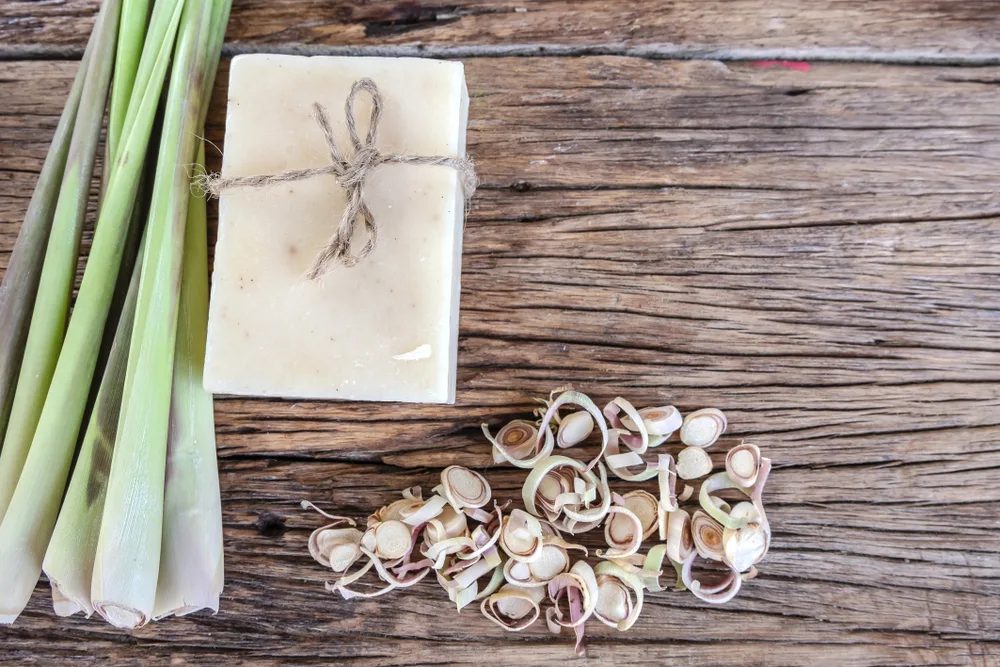
Lemongrass is not only effective for cleaning surfaces in your home. It is also great for making natural cleaning products for your personal cleaning and beauty regime. For example, you can add lemongrass to a melt and pour soap, or to other soap recipes.
You could also make, for example:
Lemongrass Hair Rinse @ naturallycurly.com.
Sugar Lemongrass Scrub @ emilyenchanted.com.
DIY Lemongrass Lip Balm @ dearcrissy.com.
The above are just some of the reasons why growing lemongrass is a good idea. So why not try to grow some where you live?

Get the famous Rural Sprout newsletter delivered to your inbox.
Including Sunday ramblings from our editor, Tracey, as well as “What’s Up Wednesday” our roundup of what’s in season and new article updates and alerts.


